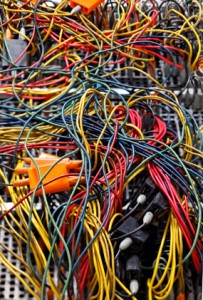The Royal Institution, in partnership with Hiscox, is running a debate this month on entrepreneurship and whether innovation begins with the entrepreneur, or is it the technology that drives innovation (tickets are still available I think at http://bit.ly/A4Z5tw)?
Which got me thinking, a dangerous condition I know, about the role of technology in communication and how far the development of technology has helped and, in some cases, hindered effective communication?
For instance; does sending out a group email to everyone in the company on a particular issue mean you have successfully communicated with each employee? It’s a marvellous technological achievement but just because everyone has received your electronic missive, it doesn’t mean they have read it, or if they did read it, that they fully appreciated what you were trying to say.
Send a press release out on distribution to a wide press list and how many journalists these days say they haven’t seen it; the email no doubt buried in the lost hinterland of their inboxes.
 E-clutter
E-clutter
You could argue that the sheer amount of e-clutter competing for an ever dwindling attention span is ultimately delivering a law of diminishing returns when it comes to effective communication.
It’s worth remembering that there is no chicken and egg conundrum when it comes to communication and technology: the message, the content, the story, whatever you want to call it, was firmly in place way before the advent of email, social media and the rest.
Don’t let the ‘how’ dictate the ‘what’
Technology has given us more options in the communications toolbox but it hasn’t provided us with the silver bullet. So whether you’re running an internal or external communications campaign, don’t let what you’ve got say be dictated by how you’re going to send it.
Get the message right and then look at how best you will get it out there which will most likely be a combination of the traditional and the technological.